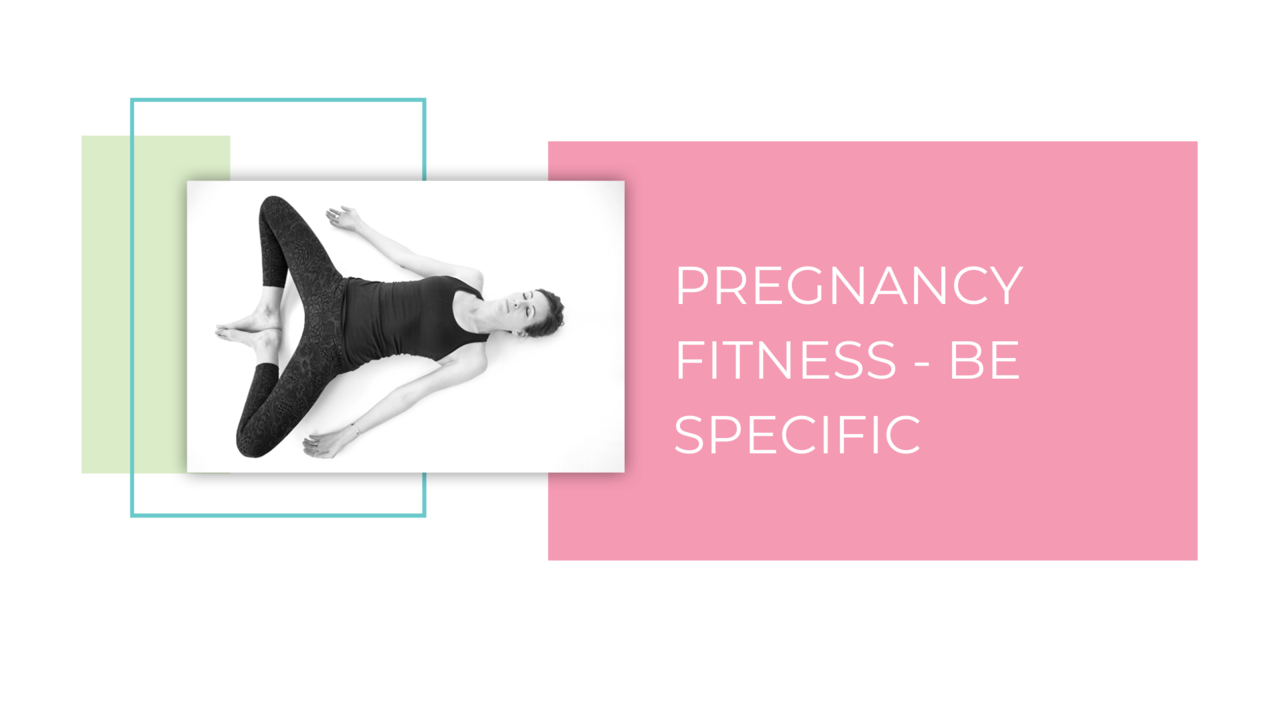
Pregnancy Fitness - BE SPECIFIC
Dec 15, 2019Fitness in pregnancy is key but there is something you absolutely need to keep in mind - be specific. There is a principle in fitness called the Principle of Specificity. It states that the best way to develop physical fitness for your event or activity is to train the body as closely as possible to the way it will be used in the event or activity. Thus, the best way to train for running is to run, for swimming is to swim, and for weightlifting, lift weights. So, what about birth?
Birth is a very physical event – like a marathon, many say - and it is an event that you should prepare for. But you can’t practice giving birth, so what’s a pregnant woman to do?
You can prepare your body for birth using exercises that mimic labour and birth positions. During pregnancy, if you incorporate labour and birth-specific movements into your workouts, you will prepare your body for when you are actually in labour and be better able to handle the physical demands of certain positions.
Here are a few of my favourites:
Hovering

Hovering or tall kneeling, is a great pelvic floor exercise, a good glute builder, a great inner thigh toner. It encourages space in the pelvis for birth and prepares you for labour and birth positions that have you kneeling or on all fours.
Start with your knees a little wider than hip-width apart. Bring your toes to touch behind you, your hands on your hips and rest your bum on your heels to start. Inhale to expand, then exhale to engage your core using pursed lips and your best core cue as you lift your bum away from your heels and come up to a kneeling position (see photo). Inhale as you lower back down. Repeat 10x and do 1-2 sets/per day.
Incorporating the movement into a supported forward lean using the stability ball allows you to build strength and endurance in a supported position while also using gravity.
Hovering is also a great restorative exercise postpartum. I generally recommend adding this exercise back in at around week 5 or 6 and you can modify the width of your knees depending on how you feel.
Side-Lying Bent Leg Raises

The side-lying birth position is one of the best in terms of preserving the perineum. It can also be used to slow things down if labour is progressing really quickly. You can be fully on your side or you can prop yourself up with pillows on the bed to angle your body slightly and get gravity helping out a bit too.
Lie on your side with both knees bent and ensure you have a gentle curve in your low back so your pelvis is in or as close to neutral as possible.
Inhale to expand, then exhale to engage your core using pursed lips and your best core cue as you lift the top leg up. Inhale as you lower back down.
In labour, you will have someone holding your leg for you but it still helps to have strength and endurance in a position that you may be in for a while.
You can also play around with the angle of your top leg – when you internally rotate your leg (the knee points slightly downward and the foot is more up) your pelvis actually opens a bit more which is key during labour and birth.
Postpartum I would add this exercise in at week three or four.
Pelvic Rocking

If you don’t already have one, invest in a stability ball (also called a birth ball or an exercise ball). You can use it in pregnancy, in labour and you will want one postpartum as it is one of the best ways to calm your little one. The gentle rhythm you find when holding your babe and gently bouncing up and down is good exercise for you and pure soothing bliss to your babe.
For this exercise, we won’t be bouncing but rather rocking (and rolling if you like). Sit in a neutral posture on the ball – neutral meaning you have a gentle curve in your low back and can feel the ball pressing into your perineum. You can place your hands on your hips or on the sides of the ball. Keeping your upper body still, start to practice belly dance movements: thrust your hip to the left, then the right, then the left, then the…you get the picture. You can do this quickly or slowly, but make the movement come from the pelvis, not the upper body. Now, come back to neutral and tuck the pelvis under and reach the sitz bones back, then under, then back…and so on. You can then circle your pelvis on the ball in figure eights. Remember to change directions. Keeping mobility in the pelvis is key and when you take this movement into your labour you are encouraging a smoother passage for your babe into and out of your pelvis. Postpartum, this exercise is better saved until 6 weeks or more once the perineum has healed and you feel comfortable sitting on the ball.
By training for your birth marathon using specific exercises for labour and delivery, you will be stronger in your pregnancy, optimize your birth and support a smoother return to function postpartum. I give you all the 'goods' in my Buff Muff Prenatal Program safe core exercises, birth prep fitness, best birth positions, preparing the pelvic floor, kegels, how to prevent tearing, postpartum recovery and a return to a fitness plan!



